What are owl pellets?
Pellets are the regurgitated remains of indigestible food made by a wide range of birds, and most well-known pellets are those produced by owls.
Owl pellets can be told apart by their size, shape and location.
Other birds, such as kestrels, sparrowhawks, buzzards, herons, corvids, gulls and waders also produce pellets, and these provide excellent clues as to what the birds have been eating.
Some mammal droppings can be mistaken for pellets, particularly those of carnivores or omnivores, such as otters and foxes, which often contain bones.
How to identify owl pellets
In the UK and British Isles, there five resident species of owl – tawny, barn, short-eared, long-eared, and little. The first four species listed as native, whilst the little owl is a non-native species and was introduced in the late 1800s.
Most owls produce one or two pellets a day, and these are usually found at roost sites. Do not disturb a roosting owl, and remember it is illegal to enter an occupied barn owl nest site without a licence.
Dissecting owl pellets is a fun, interesting and educational activity for both children and adults (though children should be supervised), and is sometimes run as an event by nature groups.
The small mammal bones inside can usually be identified to species, and the results of dissecting owl pellets can be shared with the Mammal Society to add to their records of mammal sightings.
Pellets from the same species can vary in size and shape, as well as in colour as the pellets age. Where a pellet is found can help identify which species has produced it. For example, long- and short-eared owls are very rarely found inside buildings or inside tree cavities.
How to identify tawny owl pellets
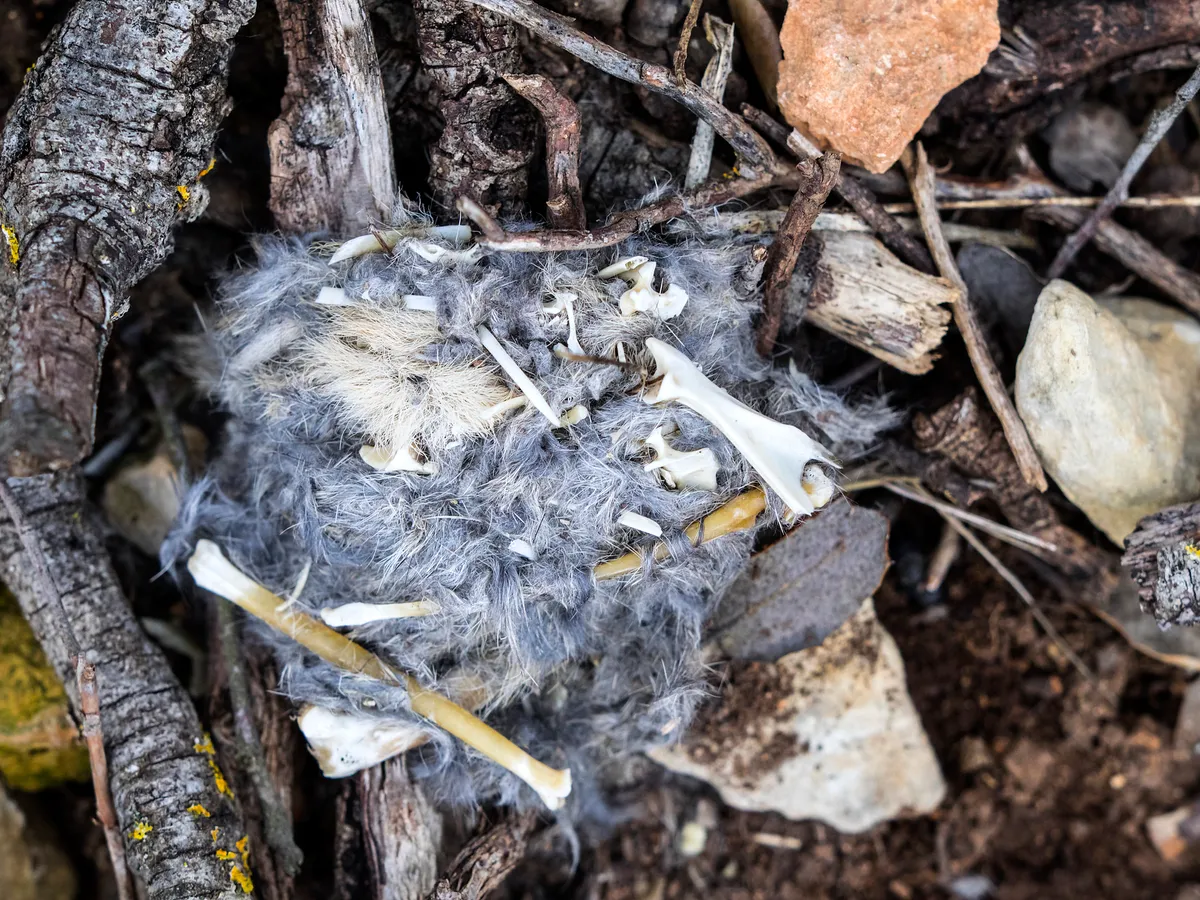
Tawny owl pellets are grey, cylindrical, around 6cm x 3cm with somewhat pointed ends. These pellets are often found at the base of conifer trees used for roosting, and in suburban areas they often contain bird remains.
How to identify barn owl pellets
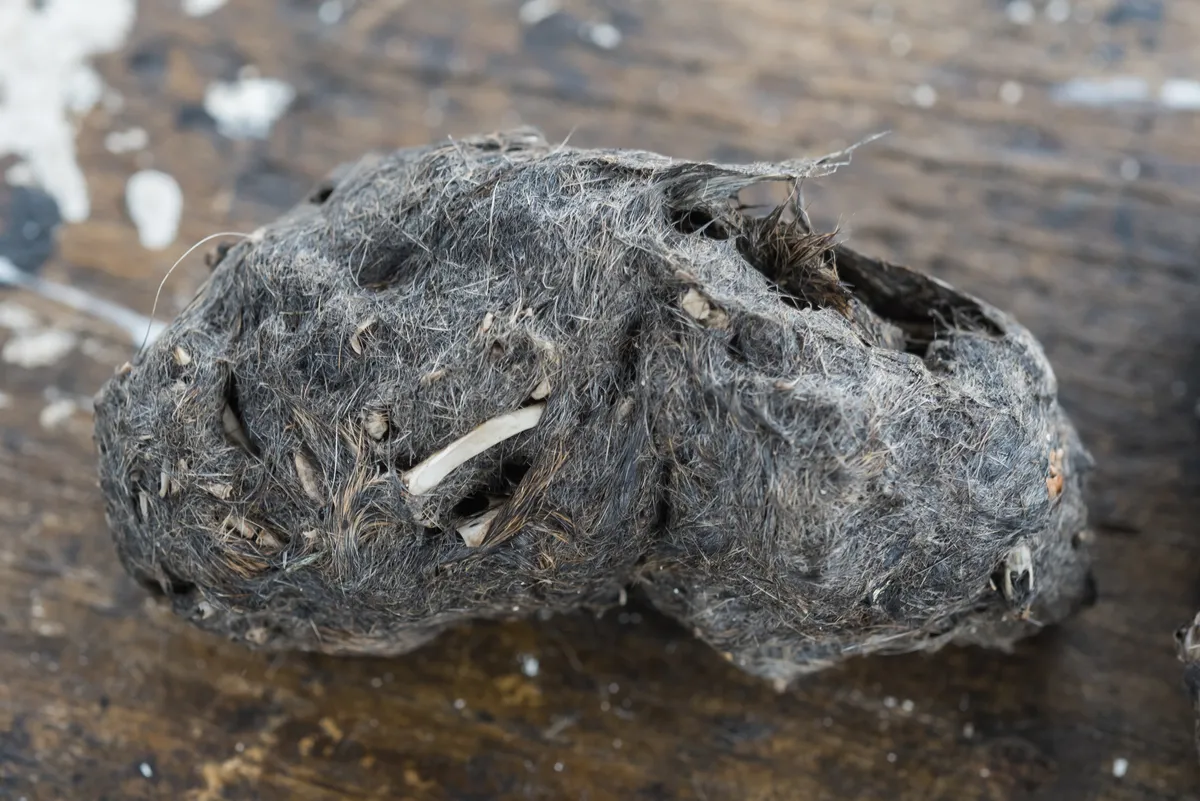
Barn owl pellets are generally found at roost sites in buildings and are characteristically rounded or cylindrical. They measure roughly 5cm x 3cm, with a smooth surface covered with blackish-grey crust. The barn owl is the owl species most likely to eat shrews.
How to identify little owl pellets
Little owl pellets are mostly found in buildings and hollow trees.
They are very small compared to the pellets produced by other owl species, measuring only up to 2.5cm x 1.5cm. They are rounded at one end and pointed at the other.
In summer, they largely contain insect remains, so may appear blue-black from the beetle elytra (the hardened outer wings). In winter, the pellets are grey and contain the remains of mice and small birds.
How to identify long-eared owl pellets
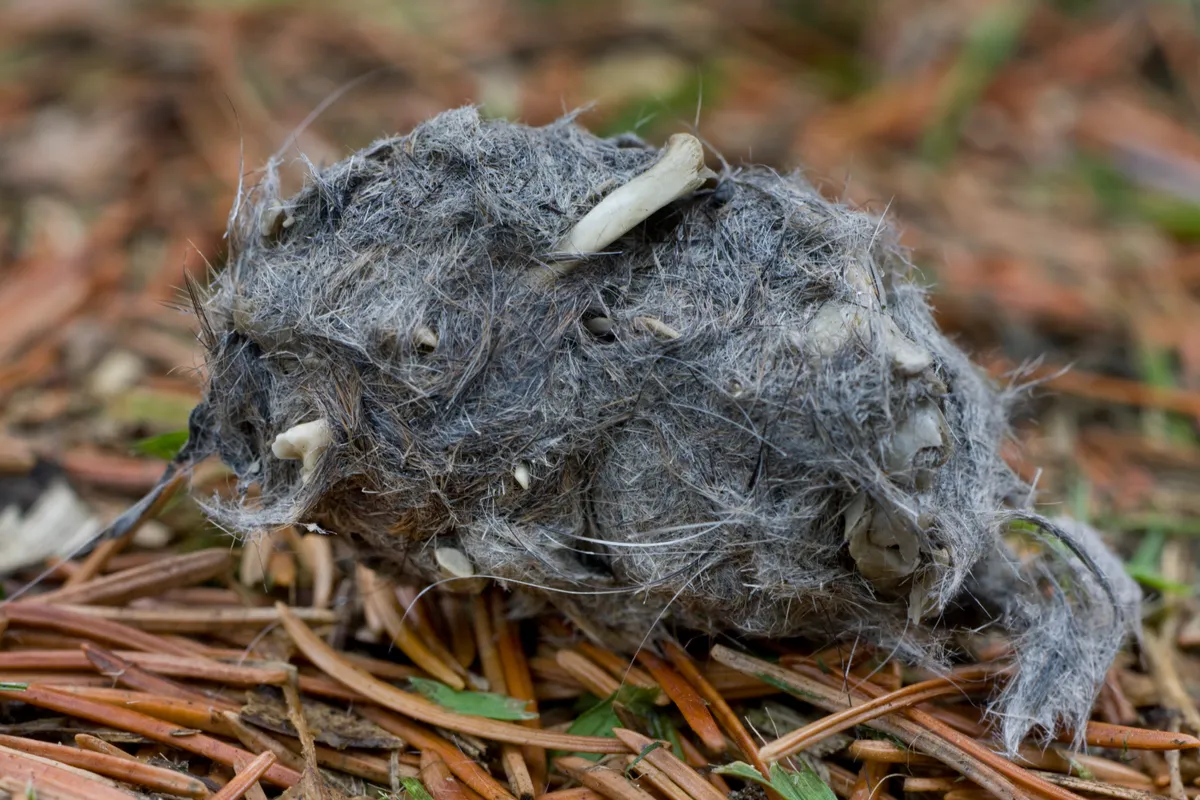
In winter, long-eared owls roost in trees (often conifers) and close to the ground in bushes. Their pellets are pale or dark grey, thin and elongate up to 7.5cm x 3cm, and are rounded at one or both ends.
How to identify short-eared owl pellets
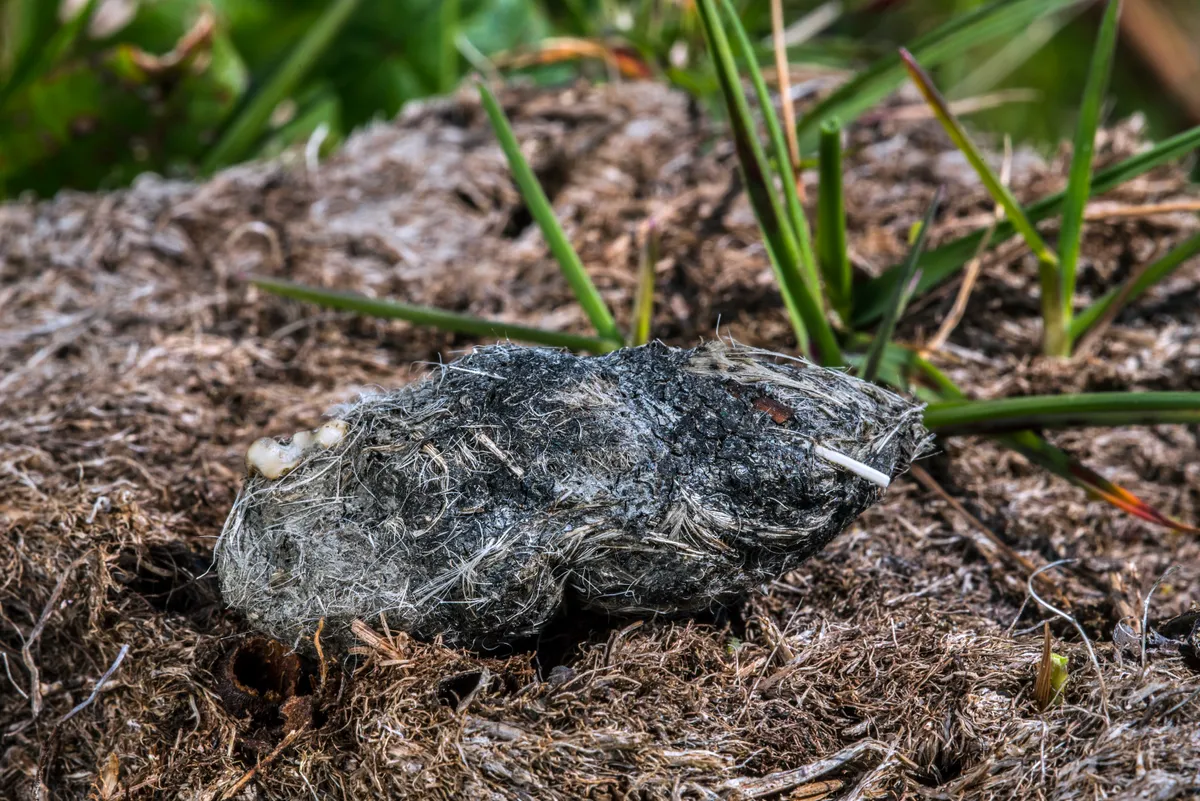
Short-eared owls roost on the ground and produce very similar pellets to long-eared owls.
Other bird pellets and similar-looking droppings
How to identify kestrel pellets

Kestrels nest in holes in trees and buildings; pellets are 3cmx1.5cm, rounded at one end, pointed at the other. They may contain remains of small mammals, birds and insects.
How to identify rook pellets
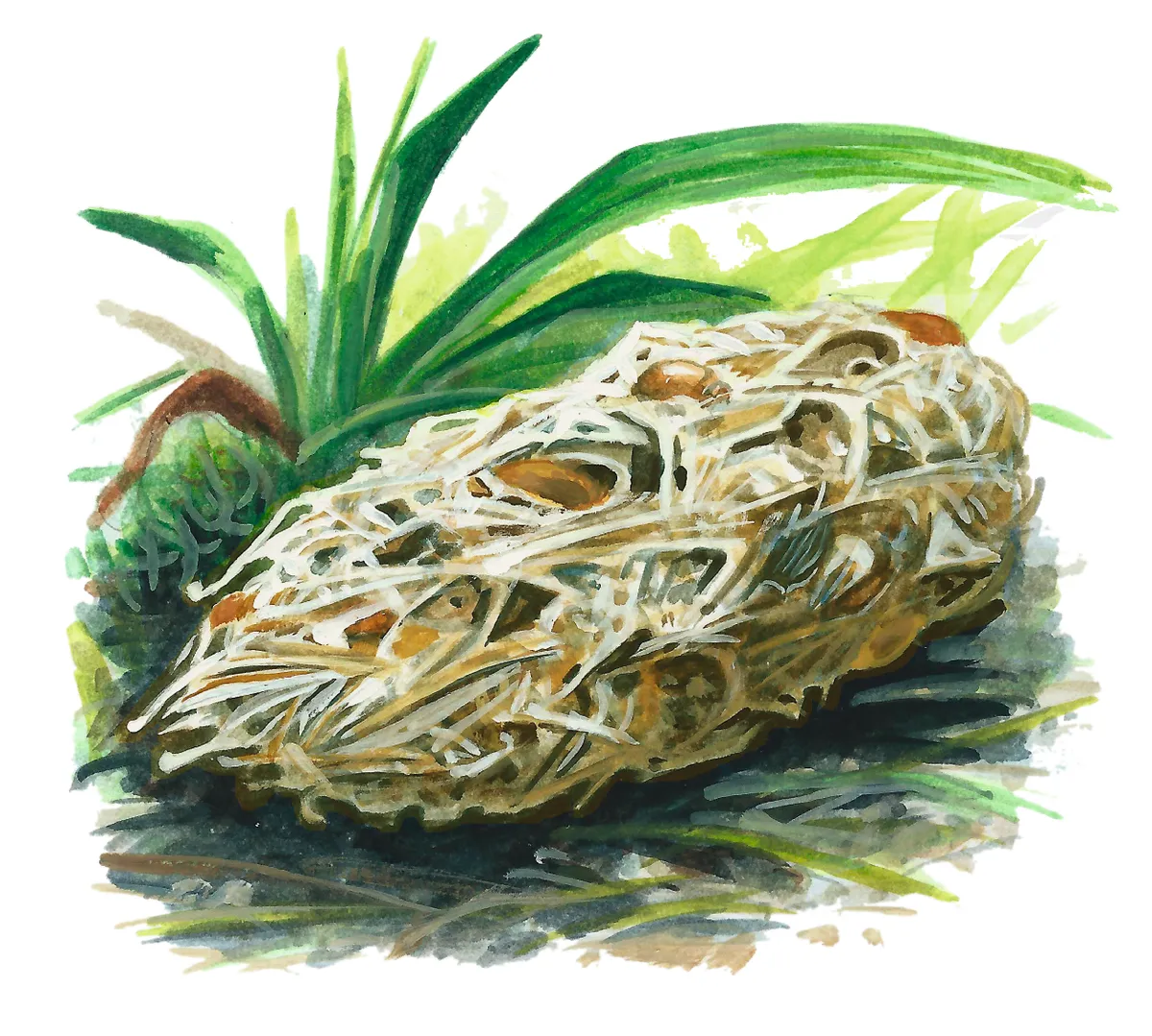
Rook pellets are most commonly found below rookeries and in fields where rooks have been feeding; 3.5cmx1.5cm and generally contain plant remains and small stones.
How to identify gull pellets
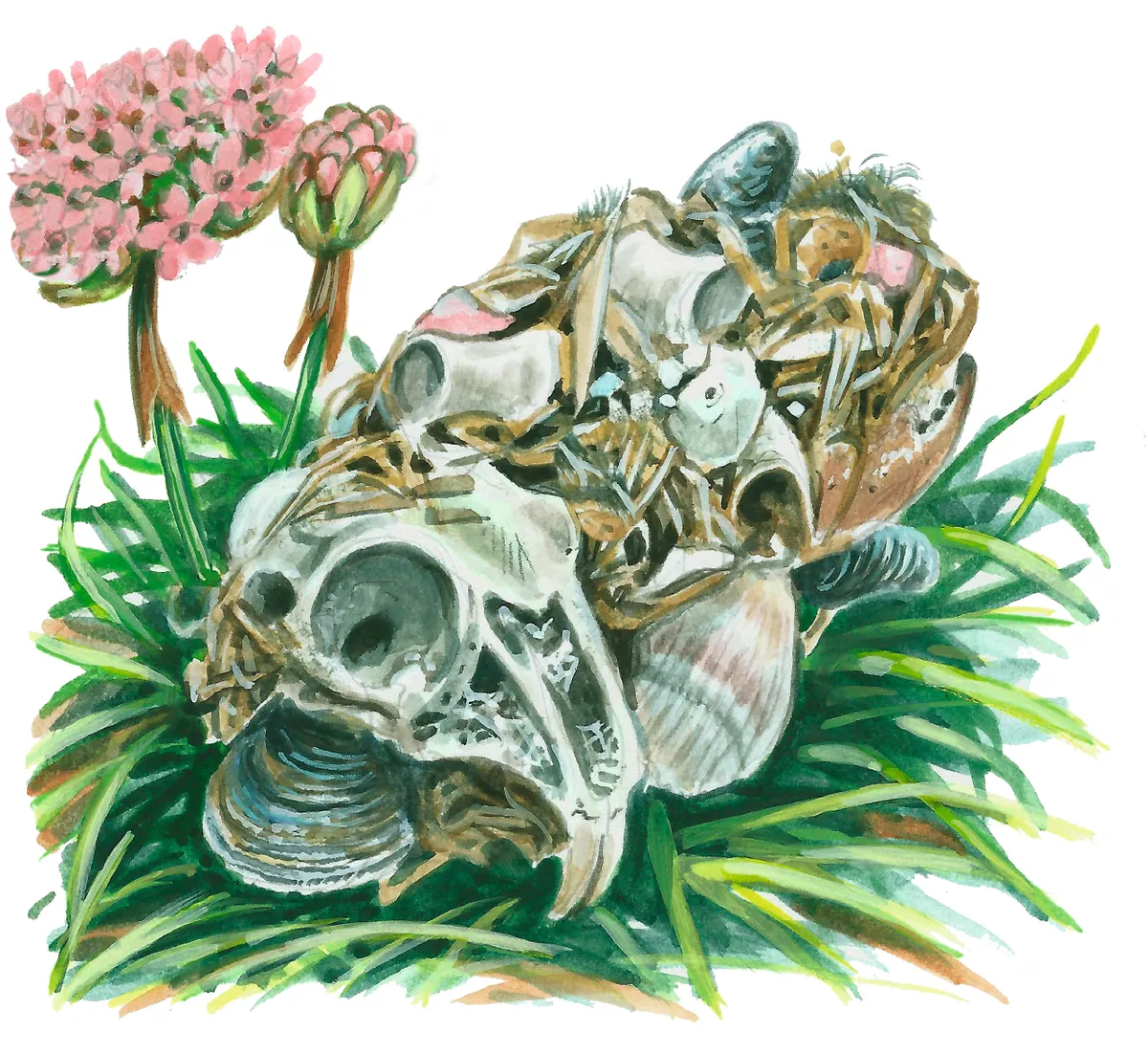
Gull pellets generally found at breeding colonies, roost sites and in fields where they have been feeding. They contain fish remains, plant material and the remains of fruit and garbage.
How to identify fox droppings
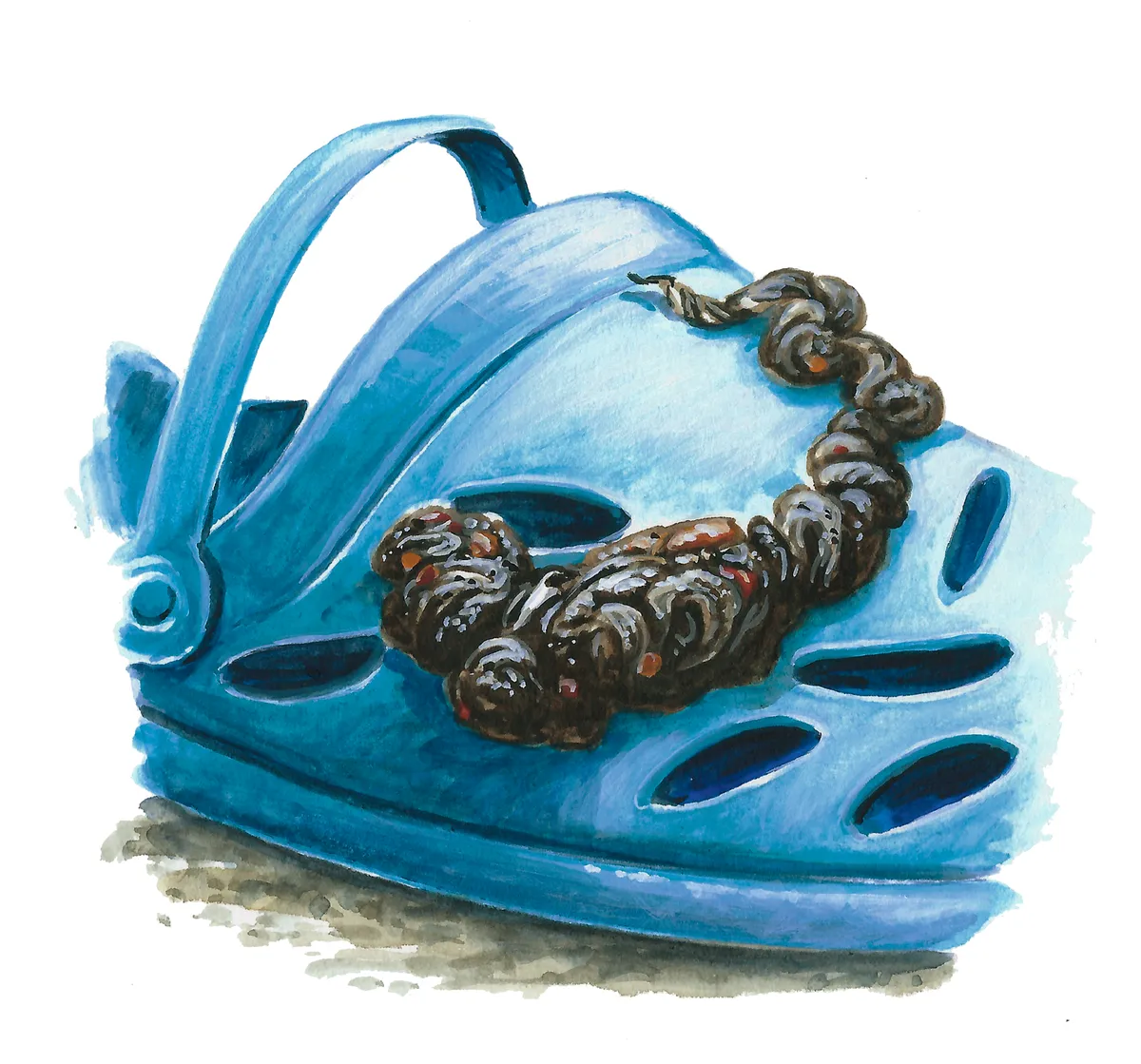
Occasionally there can be confusion between owl pellets and fox scats: pellets are only found at a roost or perch site, while scats tend to be longer and thinner and often contain some plant material and insects.
In addition, scats contain fur or feathers, have a twist at one end, and when fresh, smell of fox.
In urban areas (where they eat a lot of meat, bread and bird seeds), fox scat tends to look like a small dog dropping.
How to identify otter spraint

Known as spraint, otter droppings are normally coarse and black, full of fish scales, shell fragments, fish and crayfish parts, and sometimes feathers or fur.
As otter poo dries out, it becomes pale and crumbly. Otter spraint may also just be oil deposited to mark a territory.
Whether or not it contains poo, otter spraint has a unique smell – some people describe it as a very musky and fishy smell, with a sweet taint surprisingly similar to jasmine tea.
Look for otter spraint in prominent spots along a stream, lake or river, such as grass mounds or rocks.
How to dissect owl pellets
To see the contents of pellets, soak them in water and dissect out the bones. Most prey will be small mammals. To identify them, look at the teeth with a hand lens.
Shrews have continuous rows of small, pointed teeth, whereas rodents have a gap between the front incisors and the cheek teeth.
The cheek teeth of voles have a zig-zag chewing surface, those of rats and mice small rounded cusps.
There’s no better way to spend a cold, dark winter’s day than indoors analysing owl pellets. This fascinating activity provides valuable information on the diets of our different owl species, helps us collect records of rarer species, such as harvest mice, and is a valuable means of monitoring changes in numbers of small British mammals. So, when you have finished analysing your owl pellets, make sure you send your records to The Mammal Society at the address below.
Owl pellets can be stored dry. Make sure you include details of the species of owl, collection site and date.
Owls swallow their prey whole – pellets are the regurgitated fur and bones. Besides small mammals, which are the most frequent prey, pellets can comprise the remains of birds, amphibians, insects and even the chaetae (small bristles in the skin) of earthworms, though these are only visible under a microscope.
If the owl has eaten a lot of earthworms (quite common in tawnies), the pellet may consist largely of soil and bits of grass or dead leaves.

Method
To see what is in a pellet, soak it in water. When soft, gently tease it apart with forceps. Slowly pick out all the bones and bits of insect and put to one side for identification.
Count everything – you may only have one skull but three lower jaws, so check carefully to see how many animals are represented in the pellet.
Most of the remains will be of shrews, voles and mice, which are easy to tell apart.

Identifying the bones in owl pellets
Shrews, moles and bats bones
Shrews have continuous rows of sharp, pointed teeth with red enamel tips that all look much the same.
Pygmy (smallest), common and water shrews (largest) are easy to tell apart by size – after analysing a few pellets this will be obvious.
Occasionally you may find a mole, which looks like a very large shrew but without the red tips to
the teeth.
Bats are similar and even rarer; they have shorter jaws, white teeth and prominent canines.
Rodent bones
Rodents have a conspicuous gap between the incisor teeth at the front of their skulls and the flat grinding teeth at the back. The cheek teeth of voles have zig-zag chewing surfaces, whereas rats and mice have three distinct rounded cheek teeth.
Most voles found in owl pellets (especially barn owl pellets) are field voles. Bank voles are most common in tawny owl pellets; water voles are larger and quite common in wet areas.
Most of the mice are likely to be wood mice; yellow-necked mice are very hard to tell from wood mice, and house mice are very rare. Harvest mice can be common in areas with rough grass; their skulls are very small and fragile. Young rats are easy to recognise by their large size.
Bird bones and feathers
Bird bones are very fragile, and almost-transparent feathers in the matrix of the pellet are often the first indication that bird remains are present. Identifying species of birds is very difficult, unless some characteristic feathers remain.
The skull is generally fragmented, but the beak can give an indication of the size and type of bird – seed eaters, such as sparrows, have short, heavy bills, starlings have slender bills with a bent jaw, while blackbirds are more robust and curved.
Main image: